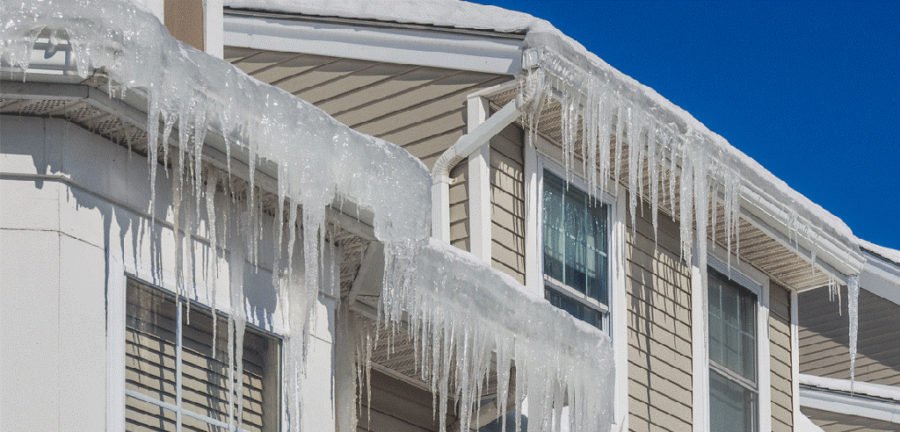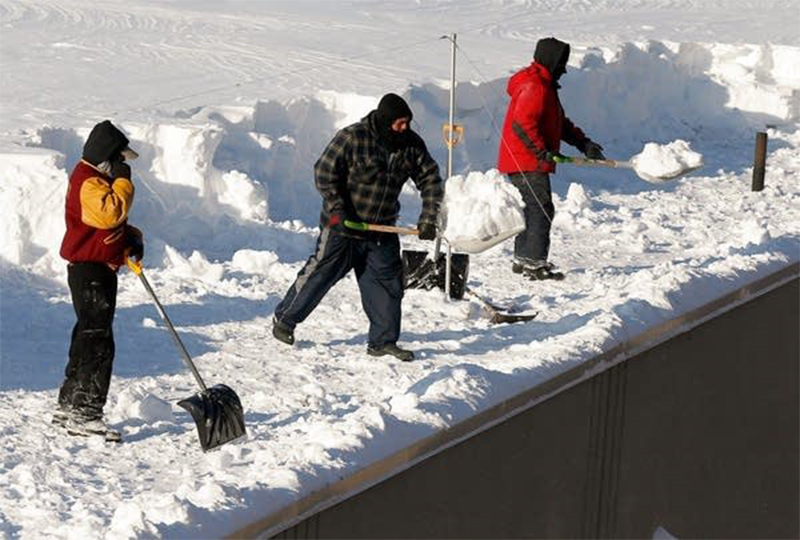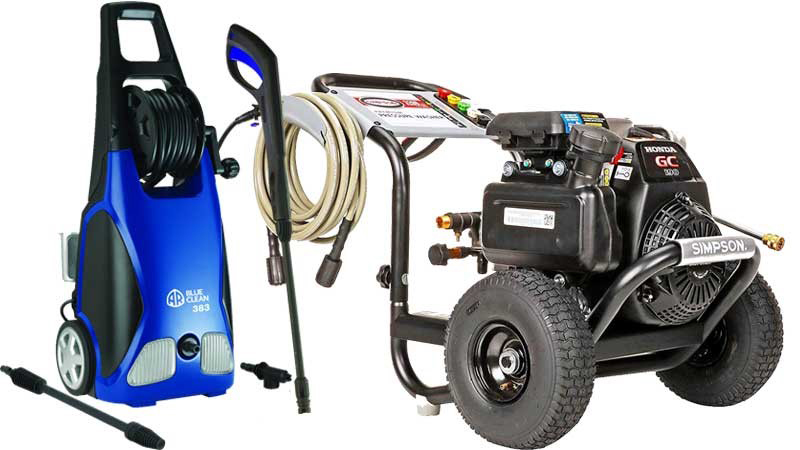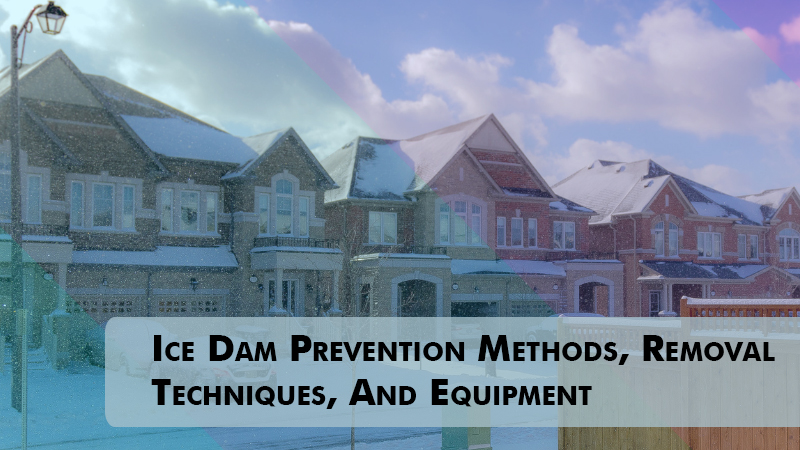Ice dams are very common in countries that face extreme cold weather. It forms as a result of snow that melts and refreezes on the rooftop. This is a common problem faced by people living in extreme weather conditions everywhere.
The layer of snow starts melting when the warmth of the air transfers through the roof. This causes the droplets to run down the roof and reach the edge. This is where these droplets refreeze because that part of the roof doesn’t receive warm air. When this additional snow melts and refreezes, the ice layer builds and becomes harder, creating an ice dam.
Ice dams are very dangerous for people and pets walking around the houses. It’s a risk to the gutter system and roof of the house. The ice dam gets heavier with time and comes crashing down to the ground in the warm weather.
This, at times, breaks your home’s gutters and harms the roof in many ways. When the ice starts melting, the water starts seeping between shingles and freezes there. It further expands and loosens the shingles. The water then starts penetrating through the roof layers if you have any minor ceiling damage thereby causing leakage.
They might make your home look like a cozy place, but they can cause severe damage to your property. If you don’t take it seriously, you might not know how it can affect your house. A single ice dam can cost you a lot if not taken care of.
So, make sure you take extra care of this risk as it might damage the interior of your house, and you wouldn’t like water running inside your home through leakages.
Fortunately, there are ways to stop it from happening. With this information, homeowners will understand how ice dams develop, effective ways to prevent them, faster solutions to eliminate an existing ice dam, and tips to avoid causing more damage.
If you own property in an area that faces intense snowy winters, or if you plan to buy a ski home, understand and address the following issues before the snowfall makes a significant difference:

Table of Contents
Preventing Ice Dams
There are a few tactics that homeowners can employ to prevent ice dams in the long term.
- Reduce the heat transference from the interior of your house
- Make sure the roof is maintained regularly
- Block accumulation of moisture from the outside
You can prepare for these long-term measures before the winter season comes. Always inspect your home a few months before the winter season arrives to ensure safety.
Solutions for Interiors
1. The ice dams will very likely not form if you prevent the heat from transferring. It is the warm spots inside the house that create ice dams. The homeowners should have a methodical approach to determine the areas with high possibilities to fix them first.
2. Most of the homes that were built in the 1980s do not have enough insulations. This is one of the essential things to consider because most homes require attic insulations with an R-value ranging from the value of 49 to 60. These insulations age and may require replacement just like any other home appliance. However, there are other areas that need attention and improvement too:
- Ductwork
- Exterior walls
- Chimneys and shafts
- Hatches into the attic
3. Apart from this, air leaks often allow the heat to pass through the walls and roof quickly. Leakages in the ductwork cause more than thirty percent of the warm air to escape. Therefore, if you seal these gaps, it will slow the heat transfer and help prevent ice dams from forming quickly.
Solutions for Exterior
1. Apart from improving the interiors, it is very important to work on the exterior as well. Make sure that what you have in your home is working properly. Next, try installing new equipment to make things better.
2. Soffits are built on the roof structure. They are linked from the roof’s edge to the exterior walls of the house. They have holes in them, which allows the cold air to enter the attic. However, insulation may block these vents so make sure that they are clear and sized correctly to promote proper air circulation.
3. You can also build some preventions from ice dams with your roof structure. Metal roofing is one way in which you can minimize ice accumulation. You can add ice or moisture barriers under the metal rooftops for better safety.
4. Heating cables, cords, or tapes can also be used to produce heat around the lower surface of the rooftop. This melts the ice dam but, this is not a lasting solution and requires a lot of attention in case of overheating.

Removal Techniques
1. Snow and ice tend to stay even if the water flows downward. The main objective is to clear the accumulation of ice on the roof. You may use a box fan to freeze any leakages if you notice any water damage through the leaks. However, this is not a permanent solution. You must remove the ice dam to protect your rooftop from any significant damage.
2. Walking on an icy roof is very dangerous, so it is better to avoid it if you haven’t done that before. However, you can use safety equipment and procedures to make sudden movements on top of the roof by standing under the spaces.
3. The best way to clear off the snow is by using a push-broom. You can use it by standing on the ground below and pull snow off the roof. However, you should stand at a distance while doing this so that you don’t pull any snow icicles on top of yourself.
4. There is a home remedy using pantyhose and chloride. You can fill up the pantyhose leg with calcium chloride pellets, tie it from the top and place it in the middle of the ice dam vertically. The pellets lower the temperature of the water causing it to melt and drain the water down. However, some people think this is a very time-consuming method and might discolor or damage the rooftop.
5. You can also hire a professional to remove the ice dam. It is generally not possible to get rid of the ice dam by standing and fixing it from below. Someone has to go up the roof to remove the big ice dams. So, if you haven’t done this before, it’s better to hire a professional than to hurt yourself.
6. It can further damage the roof because ceramic and slate tiles can easily crack if anyone steps on them incorrectly, causing further damage to the house. A professional would know the safe place to walk without falling off or causing any damage to the shingles. They often use steamers to melt the snow. They stand on the roof and blow the steamer against the snow, which melts it quickly. This is a quicker and easier way.
7. You can break the ice dams in conjunction with melting them first. It’s better if you clear the roof of excess snow and melt the channels in the dam. Once the ice starts to melt, carefully chip them off with the help of a mallet to hasten and widen the drainage. But, you should be very careful as breaking the ice dams can be dangerous.
The large swaths falling off the roof can damage bushes, break glass windows and injure anyone around. Therefore, extreme measures should be taken. If you’re breaking the ice, make sure you’re standing on the top and not on the ground as the heavy sheets of snow might fall onto you.

Equipment for Ice Dam Removal
1. You can fit a pressure washer into an ice dam steamer. Most people don’t prefer using ‘pressure-wash’ on their roof in extreme winters. The best way to remove ice and snow without damaging the roof is through ‘gentle steam.’ Gentle steam is a customized pressure washer converted into an efficient steamer. This is not easy and requires technical effort to fix it.
2. Use heated cables along the edge of the roof in a zigzag pattern. These heated cables prevent ice dams from damaging the shingles and causing leaks. It helps you equalize your roof temperatures by heating it from the outside instead of blowing it from the inside. Make sure that you install these cables before the cold weather hits for better results.
3. Installing ice and water shielding on your roof is a great idea. It will cost you more, but it will be worth it. Ice and water shielding will not prevent ice dams but, it will stop the leaks entirely. It runs only from the drip edge of the overhang to around 2 feet past the interior wall.
4. Home Energy Audit informs you about the things that need fixing to prevent your roof from any damages. The auditor will tell you about the places that are losing strength. Therefore, start investing and follow the suggestions to protect your house from ice dams. However, it will not eliminate the ice dams but reduce them because you can’t do anything with such weather conditions. But, you must take this step to make ice dams less of a problem for yourself.
5. Shovels don’t entirely help with ice, but it enables you to get it off from your rooftop. Make sure the shovel is plastic and not metal because metal can damage your roof. Next, before getting on your rooftop with a shovel, make sure you’re trained enough to carry out this task. You could fall off and hurt yourself. Keep your feet stiff and firm on the ground, and be very careful.
6. Snow Blowers can be used to get the snow off rooftops rather than shoveling. However, for the delicate rooftops, for example, solar panels, glass roofing, skylights, tile roofing, etc which are not robust extreme care is required and professional advice should be sort. They are perfect for rooftops that are robust and can bear the weight. However, you should still be very careful with this method.
7. Use a plastic roof rake with small rollers because the metal is something you should never use as it can badly damage your shingles. Stand on the ground and pull the snow slowly off your roof. Reach as high as you can, but don’t stand on a ladder.
If the snow is more than 3 inches, then you should get out there and remove it. It’s not necessary to grab the roof rake every time. Just look at the amount of snow; if you see flurries, stay back but, make sure the snow doesn’t pile up.
Warning Signs
A home with a fine line of icicles along the rooftop is a danger zone. The longer they stay, the bigger the ice dam will get. Therefore, homeowners should watch out for warning signs as mentioned below for precautions:
- Snow piles falling off the eaves
- A lot of heavy snow in the weather forecast
- Constant low temperatures making the existing snow stay on the rooftop
- Extreme cold rooms on the top floor of the house
- High temperatures inside the attic
- Icicles sliding off the gutters or siding
- Ventilation in the attic
- Temperature fluctuating around 32°F, leading to a melting and refreezing process

Conclusion
To sum it up, the perfect time to fix the ice dam is during the last winter spell of the year. If you try to fix the ice dam during the winter season, it will very likely reoccur the very next day. But, don’t let it stay for long. Try removing it every day in bits.
Most of the time, people don’t realize they have an ice dam until their ceiling starts leaking. This is an alarming situation because, by this time, the ice dam has played its part already. Therefore, it requires immediate and extensive attention.
Look out for the warning signs and trouble spots that could aggravate the current situation. If this happens to you once, it can happen again, so be prepared for it in every winter season.
Therefore, try getting regular inspections by calling professionals at your home whenever it’s needed. It might be costly, but it will save you from a bigger expense of fixing the whole construction of your house. Your home’s roof is one of the expensive things that should be protected and taken care of deeply. It should be taken as an investment rather than a chore.
Recommendation and disclaimer: This article is for information only and is not a recommendation to act in any way other than to seek professional advice and assistance from an ice dam removal professional in your area. This is easily located by making a Google enquiry for “Ice dam removal professionals” for your area.

